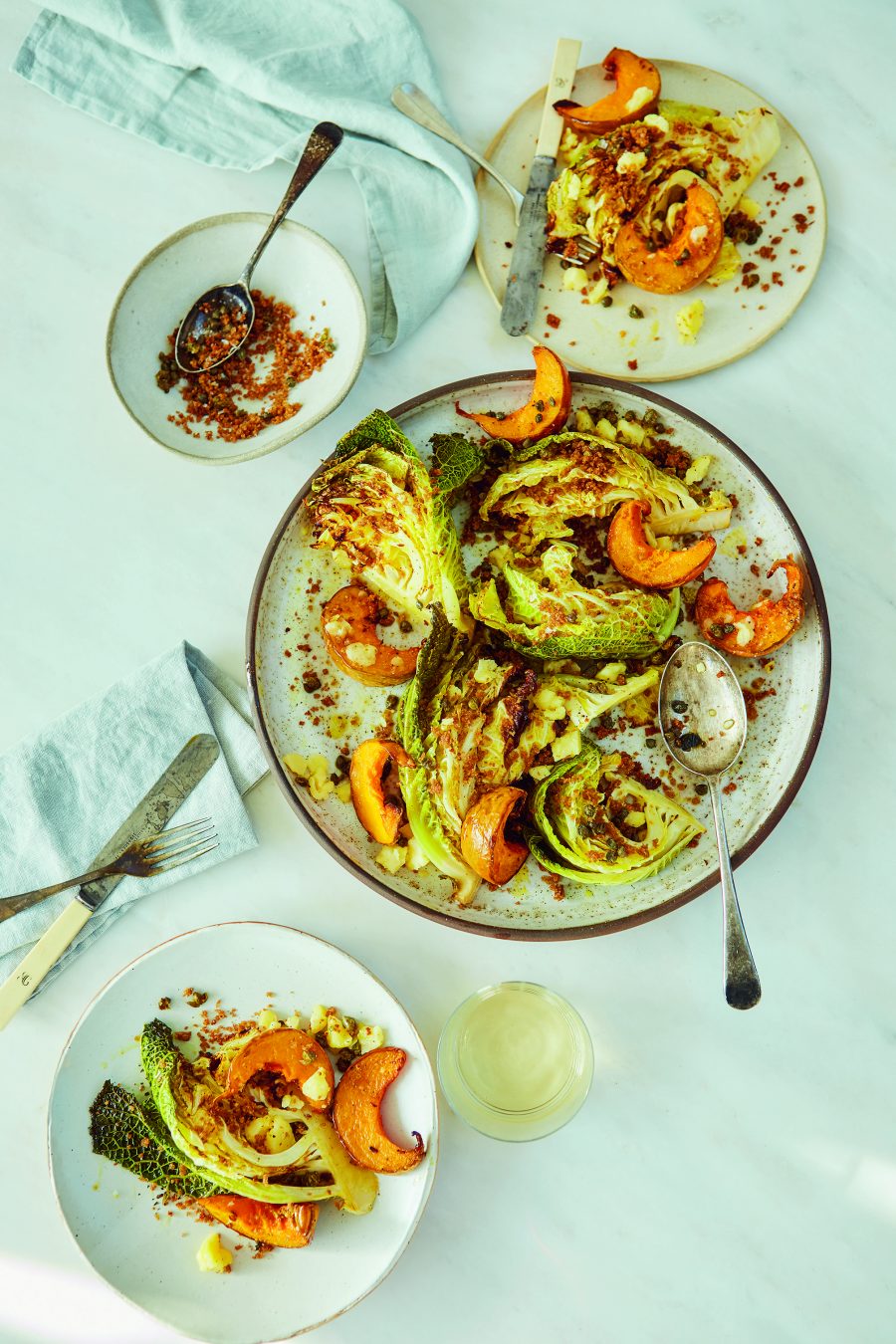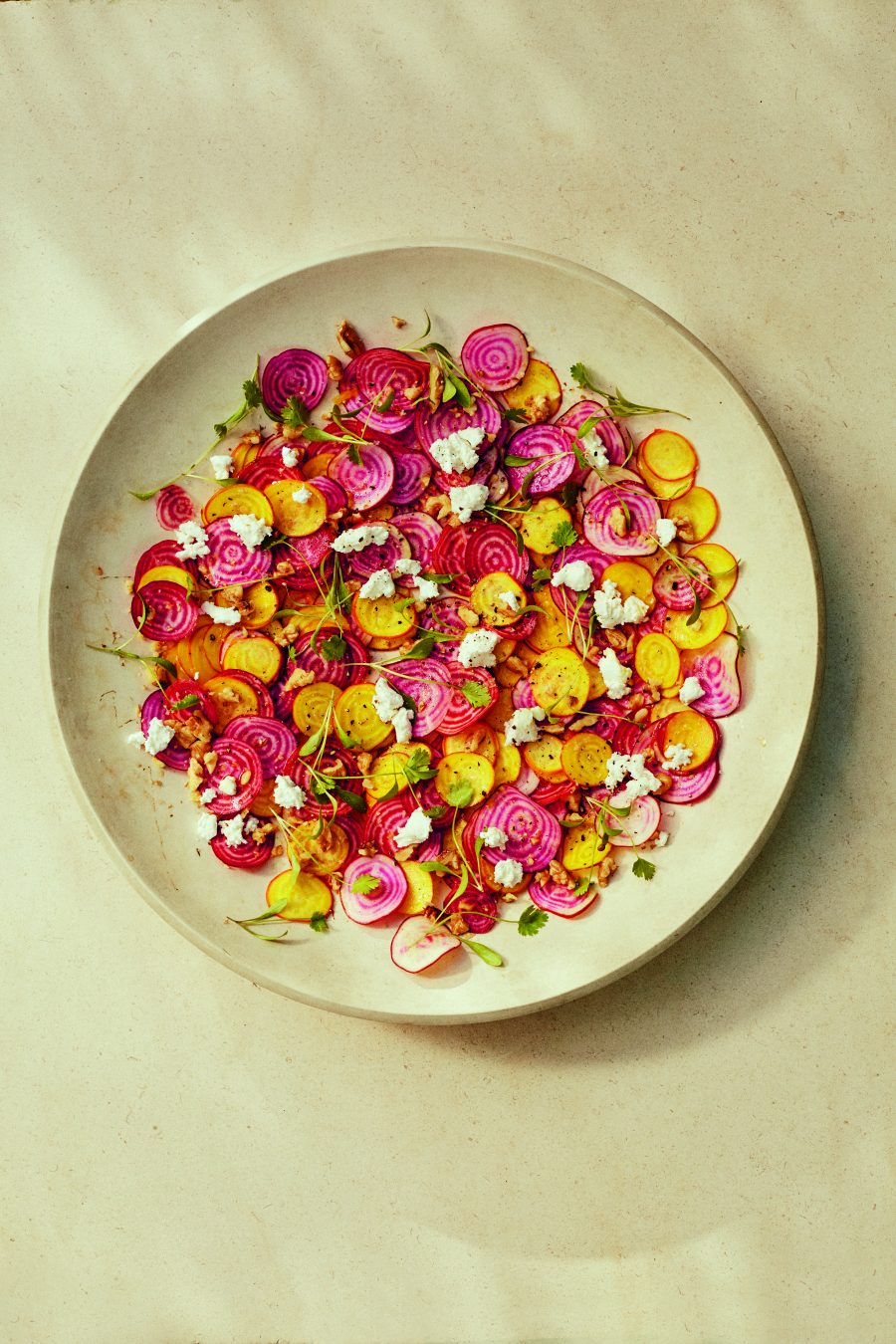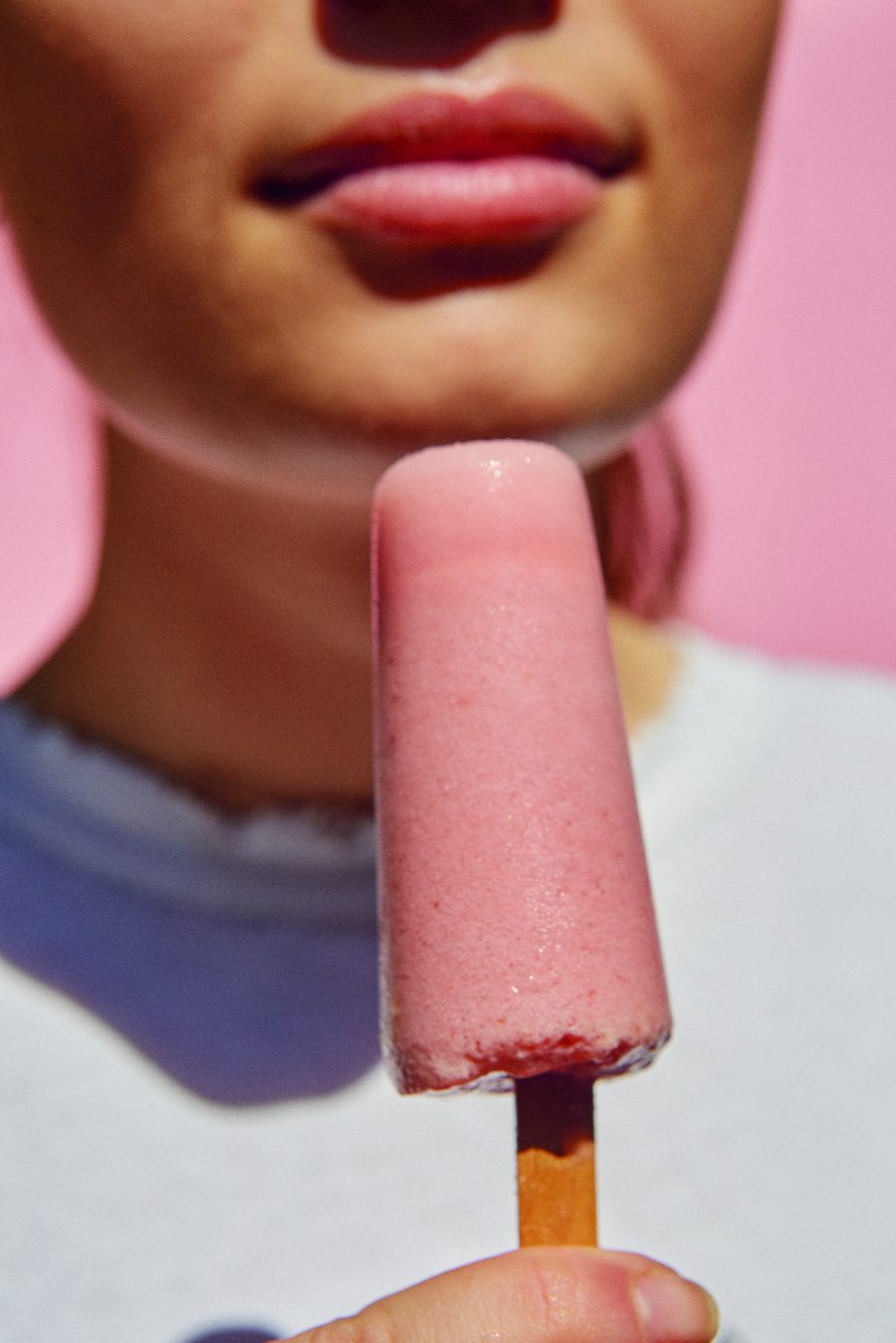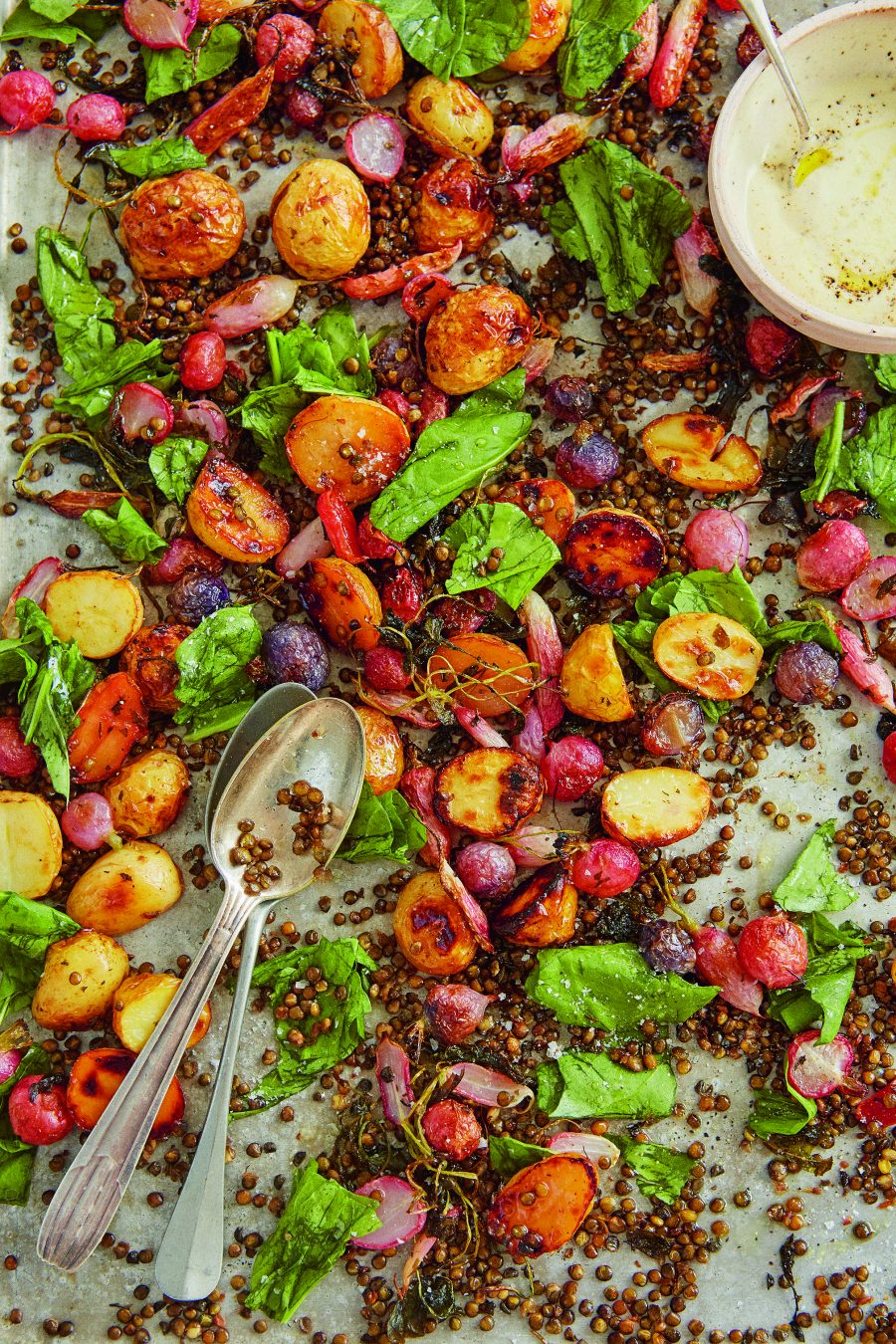Acclaimed food writer and stylist Anna Jones talks motherhood, sensory memories and the importance of the visual in what we eat.

You began your food career working with Jamie Oliver. With such a varied workload, from restaurants to beaches to school canteens, did this ground you in how people really eat and connect with food (rather than just what people choose when they are out for a meal)?
Jamie Oliver has undoubtedly been pivotal to my career, I adored working with him and the amazing team of women who work with him. I learnt an enormous amount from him – too much to distil into this interview. On the food side of things, he taught me that to write engaging recipes you need to make them easy to cook, approachable and use supermarket ingredients. He also taught me that if you set your mind to something and work really hard it’ll be possible.


Your new book The Modern Cook’s year is beautiful and reads almost like a lifestyle coffee table book rather than just a recipe book. As a stylist as well as a food writer how important is it that the recipes on the page and the food on the plate looks as good as it tastes?
For the last decade or so I have been making food jump off the plate and getting you to want to eat what is on the page at that exact moment: the slick of chocolate drooling out of a chocolate fondant, the drops of water on a freshly washed leaf of the freshest, crispest salad, the melting cheese and crumble of perfect flaky pastry around the edge of a tart.
I know that when I cook for friends the simplest salad put on a plate with a bit of thought, or an easy bowl of pasta topped with some bright herbs and a flash of red chilli, means we start eating before we’ve even got a fork in our hands. But even when I’m just making a quick breakfast or hurried lunch, I take a few extra seconds to make the food I have cooked the very best it can be.
Photographing food has become an obsession for many people with pictures of attractive meals almost as popular as selfies on Instagram. At what point in the process of your writing do you start to think about the appearance of the dish and how you might style it?
How a finished dish is going to look is something that’s always at the back of my mind when I’m writing a recipe. Taste is obviously front and centre when I’m pulling ingredients together, but something that I’ve learned from my job as a food stylist is that, unquestionably, we eat with our eyes first.
How we present even the humblest home cooked meal makes our food look more thought out, and a final top note or garnish shows that we care enough about the person we have made it for to take that extra minute. It can also make you look like a really good cook without really having done anything at all.

I have been a fan of your food since your first book and have always enjoyed preparing and eating your recipes. Being dairy free it can be really hard to enjoy cookbooks to their fullest as there are often so many recipes that I can’t eat. Yours are almost all adaptable to a variety of diets, how important is it that your food is inclusive in this way?
My mum and dad stopped eating meat a couple of years ago, my brother and sister are both vegans and my husband is vegetarian but eats the odd bowls of mussels. Whenever I write a recipe, I think about whether we could eat it together, it’s a conscious decision that I want everyone to be able to enjoy what’s on the table.
More and more research shows that eating meat is environmentally damaging and that a vegetable centred diet would alleviate some the planet’s woes. I am not a vegetarian but feel that if I made your recipes for every meal I certainly could be. With the growing popularity of Veganism and the growth of ‘wellness’ how far do you think we are from a significant mainstream shift in the way people eat?
Our food appetites, like fashions and seasons, are always changing. Every year I look forward, not so much to the faddish in-vogue ingredients, but to the shifts in our collective consciousness, which are more gradual and less headline-worthy, but much more important.
As the number of vegetarians, and indeed vegans, creeps up in the UK, the people reducing meat and dairy in their diets is skyrocketing. I have been so pleased by an increasing number of emails and tweets telling me that a meat-loving partner or sister is now happily cooking and eating from my books a few nights a week. Messages like these are so important to me – for it is through communal change that we will really make a difference to our bodies and the planet.
I think the normalisation of veganism will make people look at what they eat more closely, to be wiser about the big business of food. And, while I am sure many of us won’t make the full leap to veganism or even vegetarianism, I really feel it will make us question and re-evaluate our choices.


I bought your new book when my baby was 8 months old when I felt I was coming out of the newborn fog and could start to think about preparing meals that take a bit longer than 10 minutes to cook. We are also in the throws of weaning so trying to introduce lots of new flavours and textures. I live in fear of my daughter being fussy but also realise that she needs to make her own journey with food rather than have it dictated by me. I read with interest about your own experience weaning your son and his love of blander foods. How has this affected your cooking and your approach to food generally?
Probably the biggest change in my cooking, after the choice to become vegetarian, came after having my little boy, Dylan. First and foremost, it really made me understand the need to make shortcuts with my cooking: I’m constantly trying to work out how I can integrate a really busy life with giving Dylan a celebratory start to eating.
When I started to wean Dylan, I realised that he wasn’t really into sweet potato or butternut squash, which is funny because they were precisely the things that made my stomach turn during pregnancy. I’ve realised how pure a child’s palate must be. Even a parsnip becomes this really big experience for them. So, having always cooked with strong flavours, becoming a mother has given me a bit more empathy for people who like a softer approach to flavour.

In your new book you have included the recipe for a tomato tart what was made for your wedding breakfast and I found the description of the day and the importance of the meal very moving. Love and family and food have long been associated together, what is your take on this connection?
Memories and special moments in my life are always remembered though food, I have a very sensory memory, tastes and smells are as much a part of the memory of our wedding as my dress and the people who surrounded us. The connection between food and love and family is what drives me. its how I communicate, how I show people love, how I nurture them, and our wedding breakfast was just that on a larger scale. To me feeding people, be in in my own kitchen or through the recipes I write that people make in their kitchens is the greatest privilege. Cooking is an offering, its showing people love, its sitting around a table and sharing, sharing food, time, stories, having conversations, making time in this busy world for connection, our wedding was just that. Sharing our connection with all those who care about us, they lifted us up and made us feel loved and supported in such a very special way. Nothing will ever taste as sweet as that meal.

You must have written some (or all?) of your new book whilst caring for your new son and planning your wedding. Simone and I launched Also whilst I was moving house and pregnant and whilst Simone planned her wedding and bought her first flat. I hate asking women the cliched question of the life-work balance but it seems to be genuinely at the core of so many creative women’s lives. So how do you balance your family life with your work life whilst retaining a bit of space for yourself?
I think i’ll be working this one out for the rest of my life, work life balance is very much still a work in progress. The first couple of years of being a Mum I found quite overwhelming, I was writing my book, a weekly column, planning a wedding and trying to do it all without much childcare as I wanted my son to stay close to us those first couple of years. I found it challenging to resolve the parent I wanted to be with the things I wanted to do in my career. As time goes on I am working out the best path for our family. I am lucky to have some help from my Mum and Dad and to have found an amazing nursery for my son and to have flexibility so I am lucky. Its given me huge respect for parents who have a bunch of kids, my grandmother was a single Mum to 12 children in a 2 bedroom terraced house and in moments of stress or indecision it’s a good reality check to think of her.
I think as a Mum I’ve become much clearer on things, decisions have become clearer, projects have to be something I care very much about morally or creatively or they have to be able to offer me a decent financial incentive for me to take time away from my son, I used to just say yes to everything. Ultimately I adore being a Mum and the heart expanding love it brings and I love my work and I am hugely grateful for both, I never take the position I am in for granted.
On that note, what do you eat when you are in a rush?
Even though I cook for a living, most week nights I want something on the table in less than half an hour. If John’s cooking it will be something simple but flavourful like lime and chipotle black bean tacos and a quick homemade salsa, or I make a one-pot pasta with plenty of lemon and whatever veg are in season or a quick red lentil dhal.
The Modern Cook’s Year by Anna Jones is published by 4th Estate, £26


